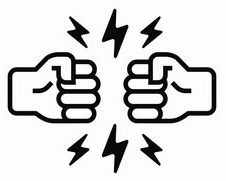How do I convert my A1C to eAG?
How do I convert my A1C to eAG?
The relationship between A1C and eAG is described by the formula 28.7 X A1C – 46.7 = eAG. Translating the hemoglobin A1C assay Editorial.
What is the difference between A1C and eAG?
Glycated hemoglobin or A1C is a blood test that shows the average level of blood sugar over the previous 2 to 3 months. A1C is reported as a percent. eAG is reported in mg/dL (mmol/L). This is the same measurement used in home blood sugar meters.
How is eAG calculated?
eAG. eAG was calculated by inserting observed A1C into the ADAG linear regression equation (eAG [mg/dl] = [28.7 × A1C (%)] − 46.7, r = 0.92) (1). A mean blood glucose index (MBGI) that quantifies the difference between MBG and eAG was calculated by subtracting observed MBG from eAG.
How is A1C calculated?
The A1C test measures the amount of hemoglobin with attached glucose and reflects your average blood glucose levels over the past 3 months. The A1C test result is reported as a percentage. The higher the percentage, the higher your blood glucose levels have been. A normal A1C level is below 5.7 percent.
What is A1c test and what is Eag?
Glycated hemoglobin or A1C is a blood test that shows the average level of blood sugar over the previous 2 to 3 months . A1C is reported as a percent. eAG is reported in mg/dL (mmol/L). This is the same measurement used in home blood sugar meters. eAG relates directly to your A1C results.
What is the relationship between glucose and A1C?
Glucose attaches to or binds with hemoglobin in your blood cells, and the A1C test is based on this attachment of glucose to hemoglobin. The higher the glucose level in your bloodstream, the more glucose will attach to the hemoglobin.
What is the blood sugar equivalent of A1c?
A hemoglobin A1c of 7% is equivalent to average blood sugar levels of 160 mg/dl (8.89 mmol/l). Hemogobin A1c of 6% equals, roughly, average blood sugar levels of 130 mg/dl (7.22 mmol/l).
Is 130 a good blood glucose level?
A healthy blood sugar level is between 70 and 130 milligrams per deciliter (mg/dL) before meals and less than 180 mg/dL one to two hours after the start of a meal, according to the American Diabetes Association. Three tests are commonly used to measure blood sugar levels.
